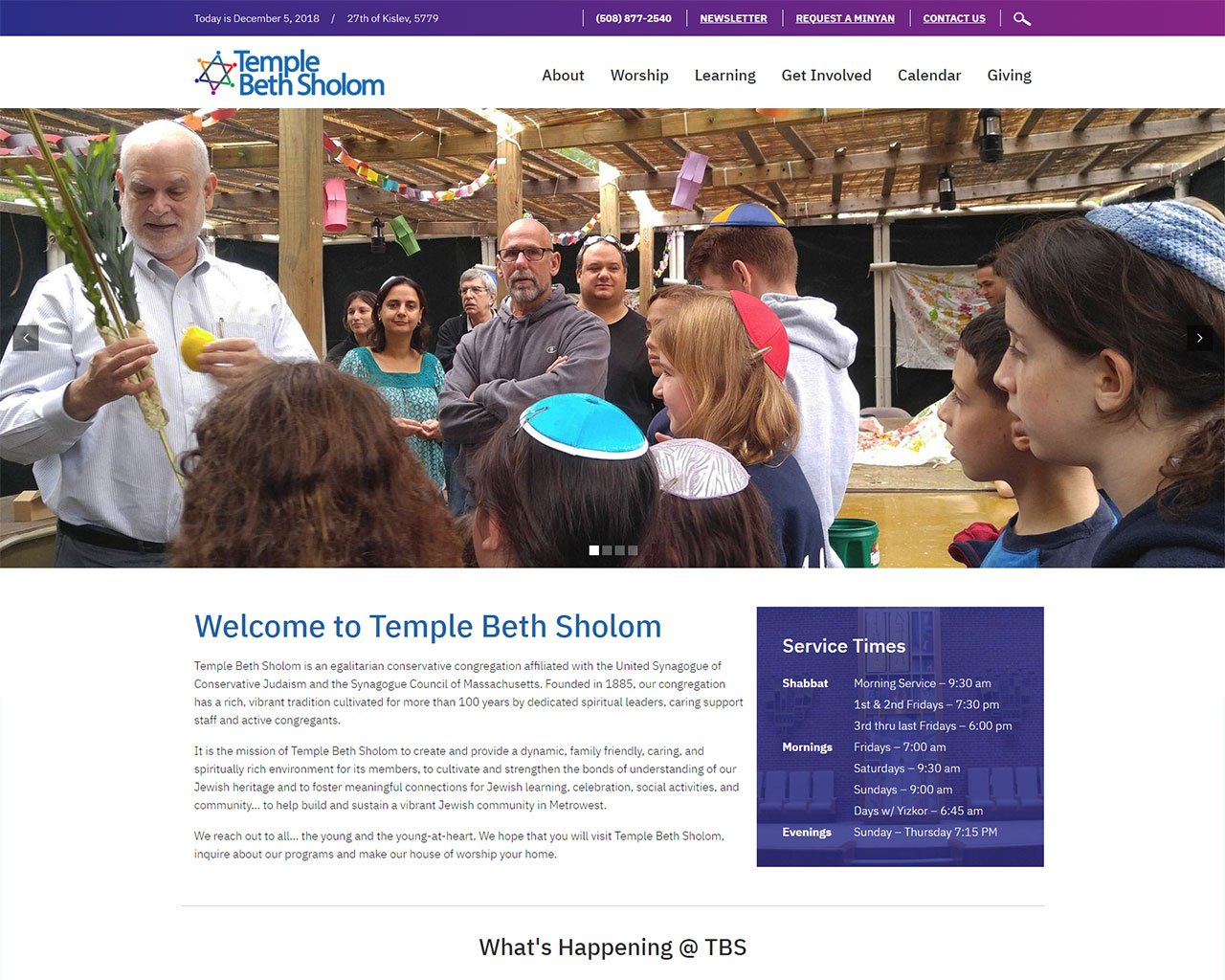User-friendly web design is crucial for engaging visitors and ensuring that they have a positive experience on a website. For Jewish organizations, this involves not only providing a seamless user experience but also integrating cultural and religious elements in a way that enhances usability and connection. In this blog post, we’ll explore how to create user-friendly Jewish web design by focusing on design principles, accessibility, and effective features tailored to the needs of Jewish communities.

Key Principles of User-Friendly Design
Simplified Navigation
Intuitive Menus: Clear and intuitive navigation is the cornerstone of user-friendly web design. For Jewish websites, this means organizing content into easily accessible categories. Use straightforward menu labels like “Events,” “Services,” “Educational Resources,” and “Community” to help visitors quickly find the information they need.
Search Functionality: Incorporate a search bar that allows users to quickly locate specific content. This is especially useful for websites with extensive resources or event listings, helping users bypass lengthy navigation menus and find what they’re looking for with ease.
Clean and Consistent Layout
Visual Hierarchy: A clean and well-structured layout helps users focus on key content. Use visual hierarchy to guide visitors’ attention, employing headings, subheadings, and bullet points to break up text and make information digestible. Consistent design elements, such as fonts and color schemes, contribute to a cohesive and professional appearance.
Whitespace: Effective use of whitespace prevents the site from feeling cluttered. Adequate spacing around text, images, and interactive elements improves readability and usability, making the site more inviting and easier to navigate.
Mobile Responsiveness
Adaptive Design: With the increasing use of smartphones and tablets, ensuring that your website is mobile-responsive is essential. Design your website to adapt seamlessly to different screen sizes and orientations. This ensures that users have a consistent and enjoyable experience whether they’re on a desktop, tablet, or mobile device.
Touch-Friendly Elements: For mobile users, ensure that interactive elements such as buttons and links are large enough to be easily tapped. This prevents frustration and improves the overall usability of the site on touchscreens.
Enhancing Accessibility
Inclusive Design Practices
Alternative Text for Images: Provide descriptive alternative text for all images to support users who rely on screen readers. This practice ensures that visually impaired users can understand the content and context of images on the site.
Keyboard Navigation: Make sure that all interactive elements, such as forms and buttons, are accessible via keyboard navigation. This helps users who may have mobility impairments or prefer to use keyboard shortcuts.
Color Contrast and Legibility
Readable Text: Use high-contrast color schemes to ensure that text is easily readable against background colors. Avoid using color alone to convey information; include text labels or patterns to make content accessible to colorblind users.
Adjustable Text Sizes: Allow users to adjust text sizes according to their preferences. This feature enhances readability and supports users with visual impairments or those who prefer larger text.
Culturally Relevant Design Elements
Incorporating Jewish Symbols
Cultural Icons: Integrate culturally relevant symbols such as the Star of David, menorahs, or Torah scrolls in a way that enhances the design without overwhelming it. These symbols can help convey the site’s cultural context and create a sense of belonging for visitors.
Hebrew Text and Calligraphy: Use Hebrew text and traditional calligraphy to reflect Jewish heritage. Ensure that these elements are used appropriately and enhance rather than detract from the user experience. Provide translations or explanations where necessary to ensure that all users can understand the content.
Heritage Colors and Patterns
Color Schemes: Utilize colors associated with Jewish traditions, such as blue and white, to reinforce cultural identity. Choose color schemes that complement modern design trends while respecting traditional aesthetics.
Patterns and Textures: Incorporate traditional patterns or textures inspired by Jewish art and design. These elements can add visual interest and cultural depth to the website, helping to create a more engaging and meaningful user experience.
Effective Features for Engagement
Interactive Components
Event Calendars: Implement interactive calendars that allow users to view, filter, and register for upcoming events. This feature helps keep the community informed and encourages participation in synagogue activities.
Online Forms: Use online forms for tasks such as event registration, donation submissions, and volunteer sign-ups. Ensure that these forms are easy to complete and submit, with clear instructions and validation messages.
Multimedia Content
Video and Audio: Incorporate multimedia elements such as video sermons, educational webinars, and audio podcasts to enrich the user experience. Ensure that multimedia content is optimized for fast loading and is accessible across different devices.
Photo Galleries: Use photo galleries to showcase events, community activities, and achievements. High-quality images help tell the story of the organization and engage visitors visually.
Conclusion
Creating user-friendly Jewish web design involves balancing ease of use with cultural relevance. By focusing on simplified navigation, clean layouts, mobile responsiveness, and accessibility, you can ensure that your website provides a positive experience for all visitors. Incorporating culturally relevant design elements and interactive features enhances engagement and reflects the unique identity of Jewish organizations. As you develop or update your website, keep these best practices in mind to create a site that is both functional and meaningful, effectively serving the needs of your community.




